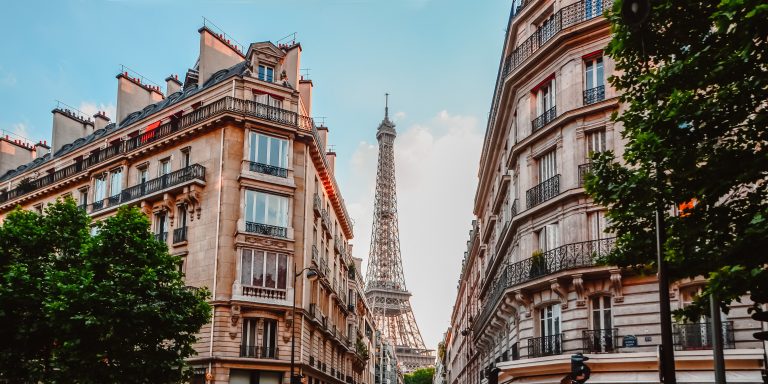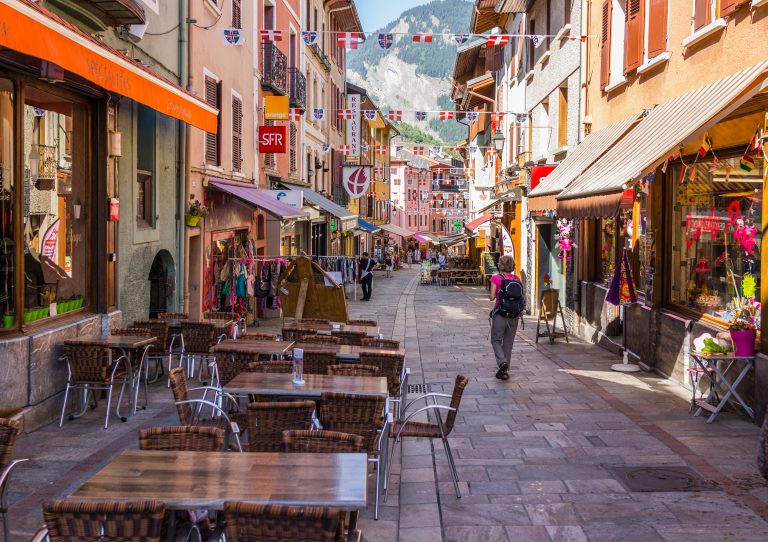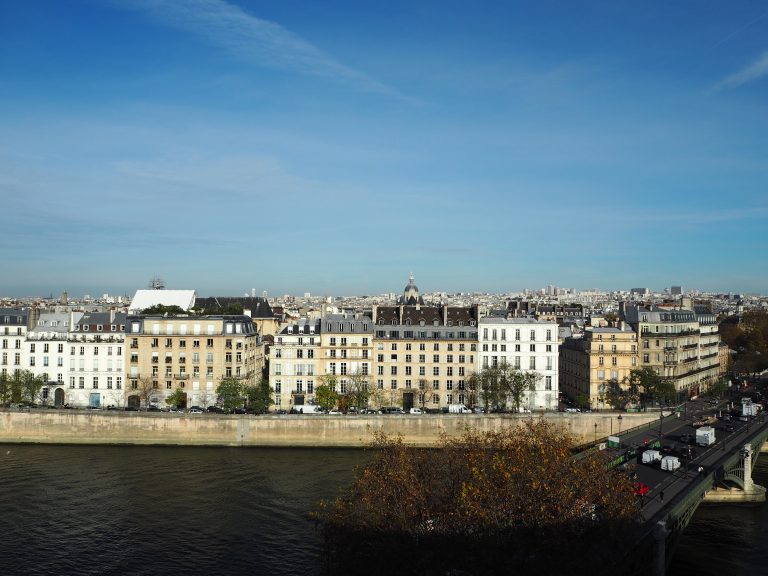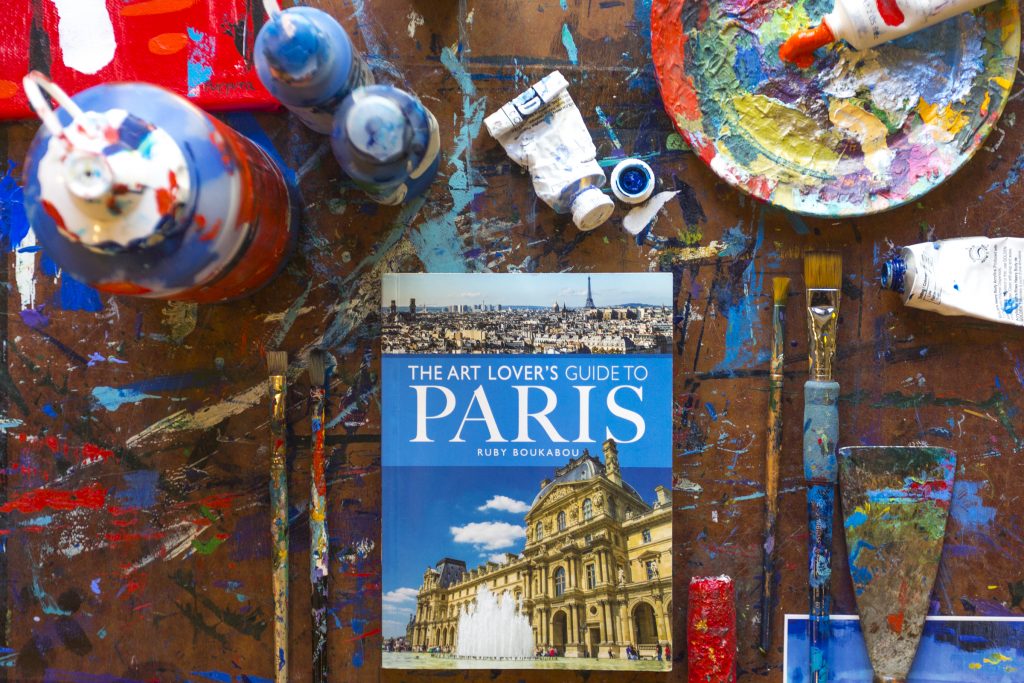
artlovers_thumbnail©oliviarutherford-6620
TIPS ON BUYING ART IN PARIS
Excerpt from The Art Lover’s Guide to Paris (Ruby Boukabou, White Owl Books)
So you’ve been wowed by the museums, inspired by the galleries and refreshed by the street art. You think it would be rather nice to buy an artwork to remind you of your fabulous Paris trip and decorate your home or office. Where to start?
The galleries, the Portes Ouvertes, the Flea Markets, 59 Rivoli, the Marché de Creation (http://www.marchecreation.com/en) are all possible ways to go. But best take the experts’ advice.
A tip on what not to do after the purchase? Don’t jump in a taxi, take a phone call and leave your artwork on the back seat, as a French art dealer did with a 1.5-million-Euro Concetto Spaziale (Spatial concept) by Argentinian-born Italian artist Lucio Fontana in the Marais in 2017 (luckily the
honest taxi driver handed it in!).
Jeremy Durack, originally from Western Australia, became the Finance and Operations Director and General Secretary of Sotheby’s France. He worked as part of the management team to establish the legal and operational infrastructure of the French auction business prior to starting auctions in France late 2001. He says that buying art needs to be about…
“a love affair. You’re after beauty and quality. It doesn’t matter how much it costs. After a week, will you still want to look at it every day? … Paintings have a spirit. Before buying, educate yourself through visiting the museums that have a rigorous selection process. Find out what the influences are of the artists you love and research other artists in a similar style that may be more affordable.”
Helen Szaday von Gizycki of Paris Fine Art Consulting is also a board member of the European Chamber of Art Experts and has over twenty years of experience of fine art advisory and expertise for clients in Europe, the USA, Asia and Australia. She previously worked as a private banker in New York and Tokyo and at Sotheby’s in Asia and Paris (http://www.pfac.eu/):
“Buy what you like, that’s the key thing. You don’t want to be buying something to put in a warehouse for ten years – what’s the point?”
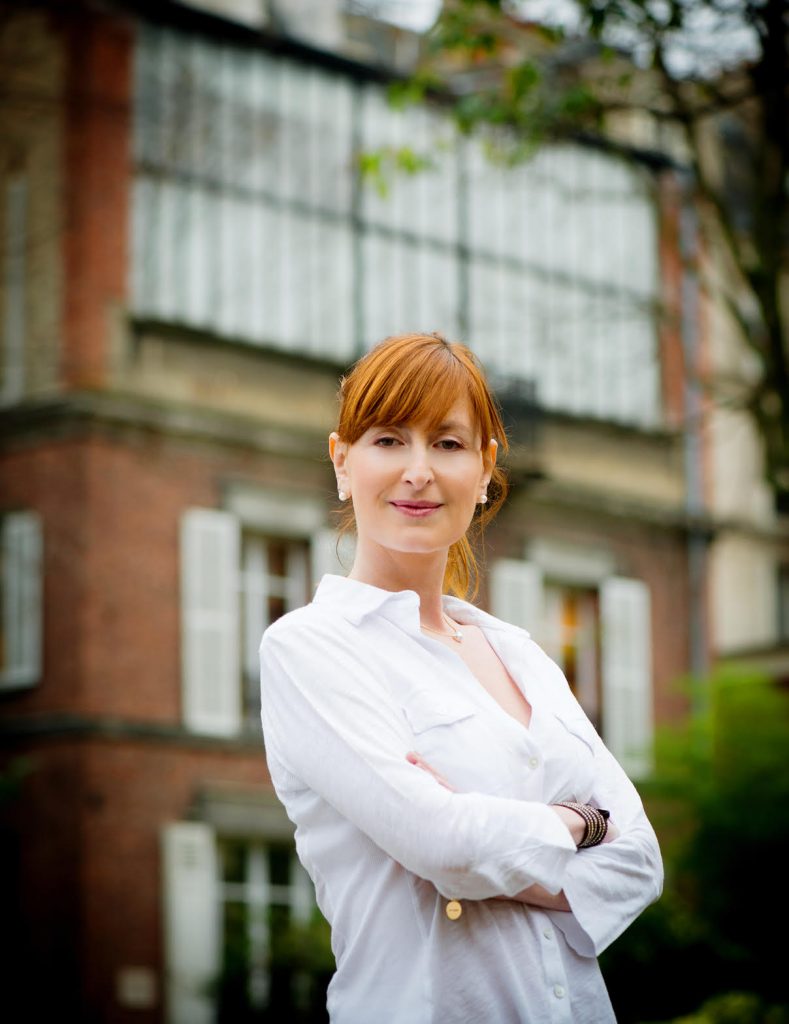
Sandra Hegedüs© Fred Marigau
Sandra Hegedüs is a Paris-based Brazilian-born art collector who founded the nonprofit organisation SAM Arts Projects in 2009 with her French husband, Amaury Mulliez, to promote
and finance French artists internationally, as well as foreign artists within France from emerging countries:
“The most important thing is to buy with your heart and your eyes, and not with your ears- it’s not because somebody told you that… no. Dare to buy what touches you, it’s the most important thing.
Find young artists at the salon de Mont Rouge [www.salondemontrouge.com]. A lot of artists whose
works are now in galleries and very expensive came from there. Be the eye, trust your eye. Visit the galleries in the Marais, Saint-Germain-des-Prés and Belleville. And if at the FIAC, don’t stay downstairs, go upstairs to the younger gallery section and you will discover exciting new artists.”
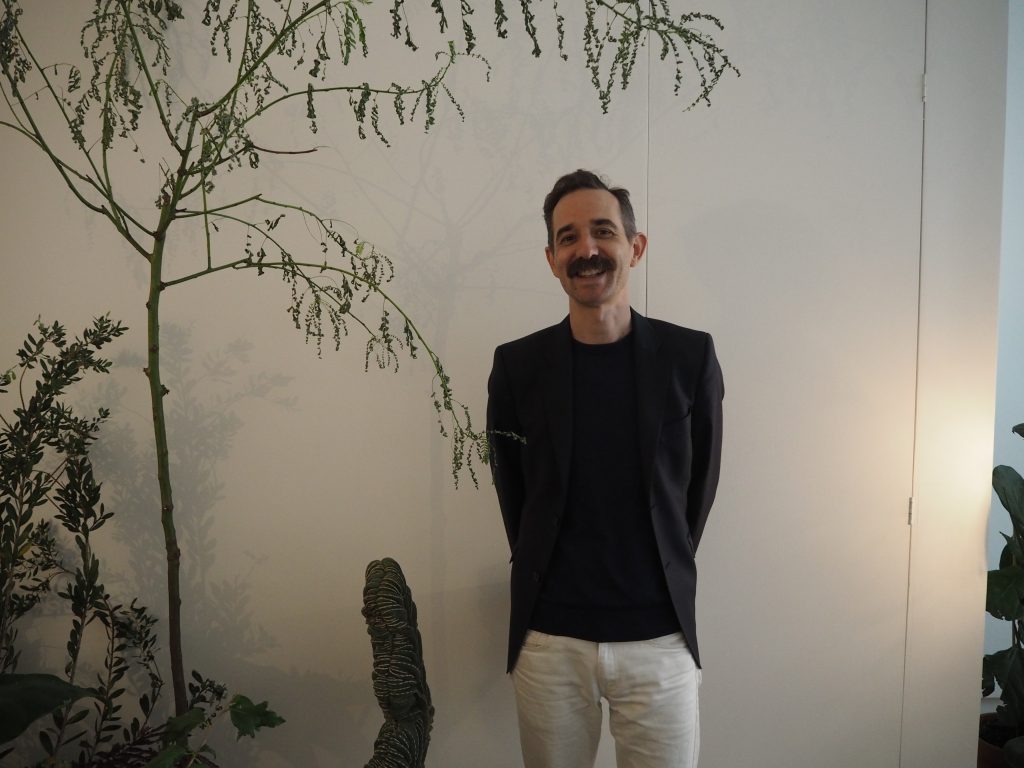
OLYMPUS DIGITAL CAMERA
Australian gallerist Joseph Allen Shea runs Galerie Allen (59 Rue de Dunkerque, 75009) and is among the most approachable and friendly gallerists in town today.
(www.galerieallen.com) He says:
“You need to speak to the experts in the auction houses and the dealers and get a feel for the market before you start buying. Build up a bit of knowledge about what you’re collecting, what’s on the market and what the prices are. Like for anything, shop around. There’s a lot of very knowledgeable people who are happy to talk. Go to the art fairs and the galleries. People don’t always realise that, while it can be a bit intimidating, these people are happy to talk about the works and they’re all passionate about what they sell. Doing your homework and speaking to the
experts beforehand is part of the pleasure as well.
“The beautiful thing about the commercial galleries is that it’s free education. There are very important pieces on display and you can just enter and have a gallery owner tell you about the work. There may be an image of the snooty unapproachable gallery owner that can make it quite scary for a first time visitor, but that’s what we’re here for. Be brave and you’ll be surprised. Go in, don’t be scared, ask questions and ask the prices (which are, unfortunately, negotiable).
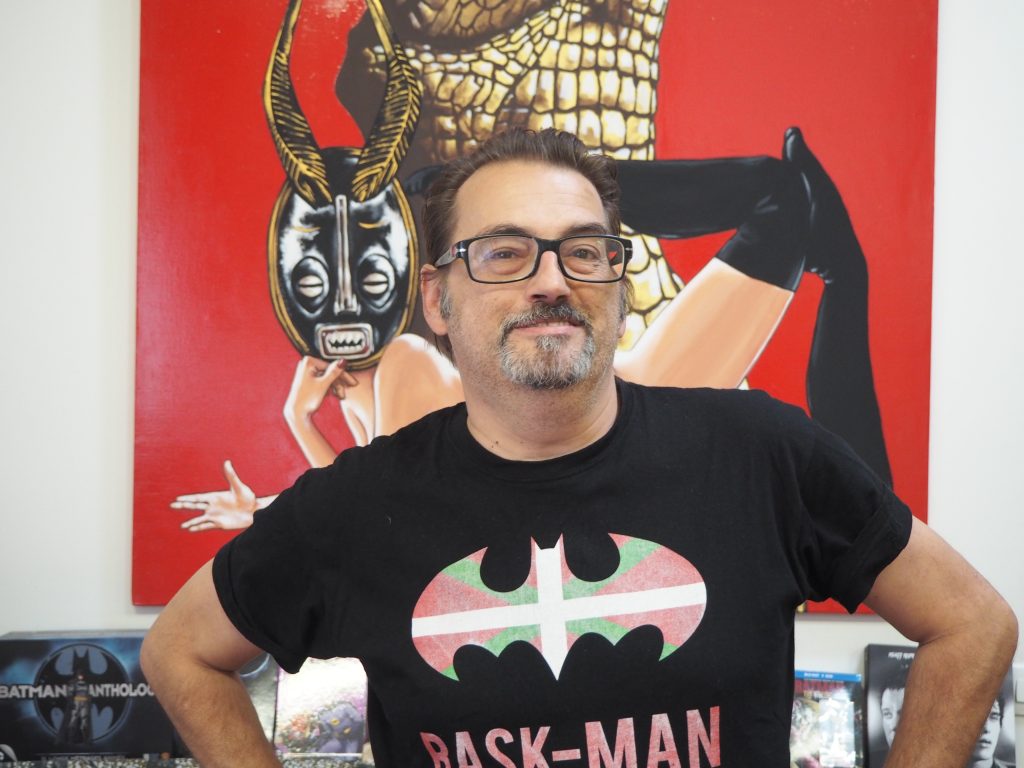
OLYMPUS DIGITAL CAMERA
Tristam Diquatrostagno is a painter/sculptor and graphic designer based in Montreuil with an erotic/pop bent. He was one of the founders of the 80s Punk street-art collective ‘Les Musulmans Fumants’ (the smoking Muslims) at the time mixing with the likes of Jean-Michel Basquiat.
“If you can, go and see the artists in their workshops. The Portes Ouvertes is the best occasion. There are so many artists that you’re bound to find something that you like and a budget that suits both you and the artist. It’s more fun this way. Or head to the galleries in the Marais. For
street art, if you see a work that you like there’s always the signature of the artist somewhere. Look them up online and contact them. Once you’ve met one artist, in general they know many others who also may take your fancy, and are generally open about sharing contacts. You’ll start to meet the artists and grow your own network. There are so many styles, you’re surely going to
find something you’ll love. »
Luc Saucier, Art Lawyer (Paris / Brussels):
“At Drouot’s Auction House [www.drouot.com] you can often find incredibly beautiful nineteenth-century paintings for as little as 100 euros. It’s amazing. You can buy the most exquisite antiques and contemporary art for nothing at all.”
Julie Eugène, Art Concierge, Le Royal Monceau Raffles Hotel Paris:
“Art helps us transcend daily life and reach the sublime; it allows us to travel, question, revolutionise and communicate across the languages. But it’s also very personal, so when a client wants to buy something, I can’t choose for them. It’s about their tastes. If they’re not sure where to start, I get them to tell me which artists they like and what media they prefer – painting, sculpture, photography… then if they like tactile, colourful etc… then I’ll direct them to the galleries that correspond. There’s also a great gallery at the hotel, Art District.”
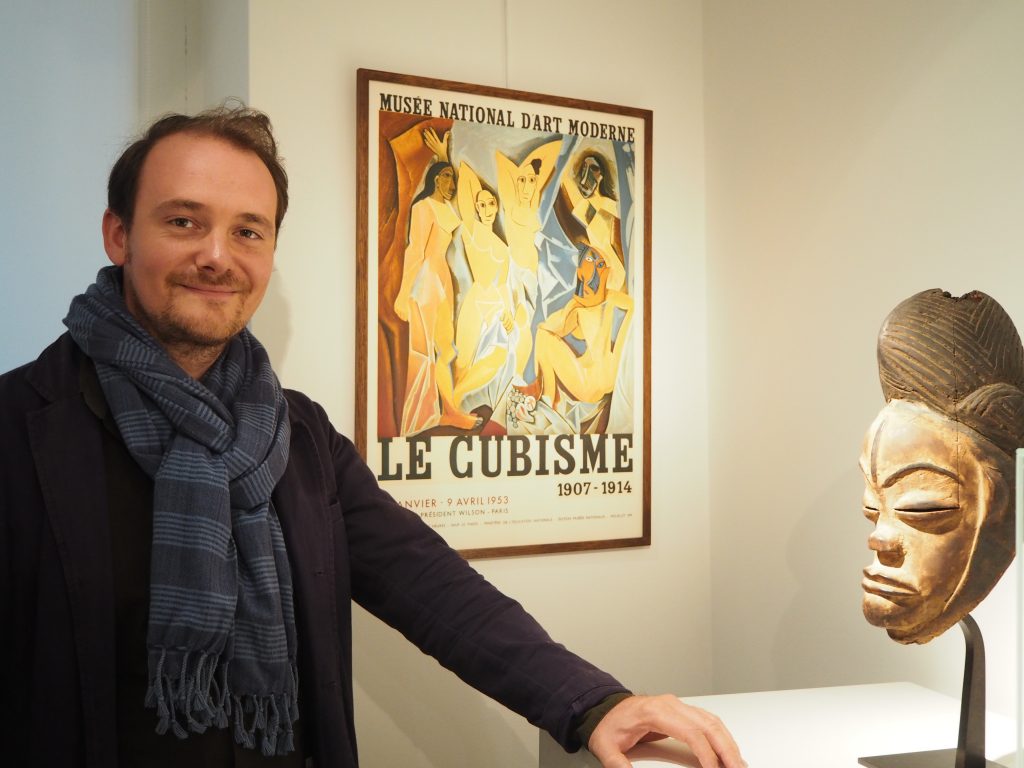
OLYMPUS DIGITAL CAMERA
Charles-Wesley Hourdé, gallerist and expert in African, Oceanic and American Indian arts, advisor for Christie’s (www.charleswesleyhourde.com):
“[When looking at buying African and Tribal art] wander around Saint-Germain-des-Prés, look through the windows and don’t hesitate to enter galleries, even if it seems slightly scary if they’re empty or if you have to ring the bell. Follow your instinct on what you like. These gallerists are so passionate about their collections that once you show a little interest, they’re more than happy
to engage with you whether you’re buying this time or not. But be careful of people coming up to you on the street – they’ll try to sell you false pieces.
Galerie Antoine Levi, 44 Rue Ramponeau, 75020
(http://antoinelevi.fr/antoine-levi/):
“Lots of collectors start by word of mouth, others by wandering into a gallery and liking something then having a conversation. But there’s no magic formula. It seems scary, but you just need to enter and see the aesthetics. Each gallery has its own research that creates a movement. Then there’s the FIAC and Paris International (see ‘Art Diary’). It’s like buying an album- maybe you’ve heard of the artist, maybe they’re fashionable, or maybe you fall across them and are delighted. Most galleries have a decent variety of prices to give you the opportunity of starting small. »
Find out more about art in Paris in The Art Lover’s Guide to Paris (Ruby Boukabou, White Owl Books). Available worldwide in paperback or digital copy or contact Ruby to order a signed copy www.rubytv.net/books.


